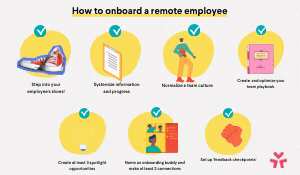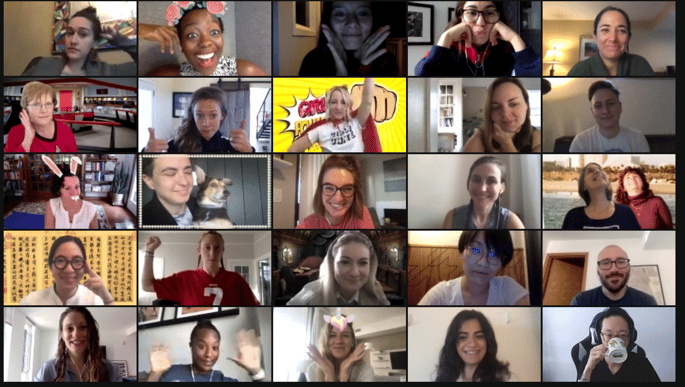Best practices for onboarding new employees remotely.
4-minute read
Onboarding, whether remote or in-person, is key to an employee’s success. Creating a positive and memorable experience remotely requires adjustments, but it doesn’t have to be challenging.
At LifeLabs Learning, we work with a variety of distributed teams to ensure employees around the world feel their learning needs are met. With this experience we’ve learned a few key steps that can turn the remote onboarding experience from survivable to thrivable.
Here are 4 best practices to consider when onboarding remotely.
1) Start strong
You can’t un-ring the bell of a bad first impression. According to Jobvite’s 2018 survey, 3 in every 10 new hires will leave in the first 90 days of starting a new job. Top three reasons for leaving include:
- Their day-to-day role wasn’t as expected (43%)
- They reported a bad experience (34%)
- The company culture (32%)
Here are a few simple steps companies can take to start their remote onboarding strong and make those initial touch points count.
- Make early wins easy. Walk through the role expectations in the offer stages. Once the offer is accepted, send a job description, including expectations and definitions of success for the first 30-60-90 days.
- Send a digital copy of any onboarding manuals that include a brief history of the company, mission, values, policies, payroll, benefits.
- Air-mail a swag bag along with the new tech that’s required for the role. Include a personal welcome letter from the team.
- Share an agenda of what day 1 or week 1 will look like so new hires can start strong as well. Some organizations we work with have the first 2 weeks of new hires’ calendars already blocked out.
Pro-Tip: Think of including a virtual breakfast with a small team to kick off the week!

 Our welcome letter is digital and gives other employees a chance to say hello and schedule their “meet and greets.”
Our welcome letter is digital and gives other employees a chance to say hello and schedule their “meet and greets.”
2) Create connection points
According to the 2018 State of Remote Work, loneliness is the biggest struggle to working remotely. When starting at a new job remotely, there isn’t the same energy that comes from being in an office and seeing others working. It can bring out what psychologists call perceived social isolation (PSI), which can lead to chronic health concerns if left unchecked (Cole et al., 2015). There are several steps organizations can take to get ahead of the isolation in a new role by creating synchronous and asynchronous connection points.
- Assign a buddy for the new hires to reach out to in their first month with questions. Microsoft is one of many organizations that leans on the buddy system. Buddies check in periodically to see how everything is going, and are available as needed. This provides a consistent connection point for new hires.
- Implement “user guides” across employees, which help teammates get to know new hires, their communication preferences, and interests. We use these guides at LifeLabs to learn more about our colleagues before setting up the first meet and greet. Try encouraging existing team mates to find time on the new hires’ calendars to say hello within the first month of them joining.

3) Capture critical info
There’s so much new stuff to take in during the first weeks. With information and novelty overload, a little structure can make a big impact on retention and understanding of messages.
- Create a checklist for new hires as they go through various trainings and meetings with internal stakeholders. This will give a sense of accomplishment and a visualization to the finish line.
- Give new hires the option to record meetings, sync ups, and shadowed calls to refer back to later.
- Playbooks, playbooks, playbooks. Create a one-stop-shop for all necessary information for the organization and a separate playbook for the role or department. Easy access to information and something to read and digest in the first few days of joining.
4) Befriend the revision
The working landscape is in constant change. And what worked onboarding folks when the company was at the size of 20 may not work when at 2,000.
- Give new hires the opportunity to provide feedback. Our partners at Lattice and CultureAmp have commonly used feedback tools. Try getting a pulse on feedback at 2 weeks, 30, 60, and 90 days.
- Ask recruiters to check in with their new hires in their first week. Recruiters are often the first name and face candidates encounter, and it can be a great way to gather feedback from a relationship that already has rapport.
- Interview managers and onboarding buddies to get a sense of what’s working and what needs 10% improvement.
For more information on remoting and onboarding best practices, check out our Complete Remote-Work Playbook and Transformative Onboarding Experience article with donut.
Onboarding and setting the tone of employees’ first moments in new roles is a worthy investment. What’s one tip you can implement into your next hires' experiences?


